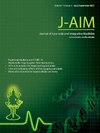Advancing inclusive and democratic medical pluralism in Nepal
IF 1.7
Q3 INTEGRATIVE & COMPLEMENTARY MEDICINE
引用次数: 0
Abstract
Medical pluralism is a global norm rather than an exception. However, the kind of medical pluralism that exists in many settings is exclusionary and undemocratic. In many nations, medical pluralism has official acceptance, allowing both biomedicine and traditional systems of medicine a legitimate space into the formal healthcare system. However, traditional systems of medicine fall far behind biomedicine in terms of structural superiority and institutional strengths. Moreover, various forms of traditional medicine, particularly of popular variants, remain excluded from formal healthcare system, and a variety of traditional healers lack official legitimacy. Though conceptually medical pluralism sounds more or less equal standing of co-existing systems of medicine, the reality is that biomedicine enjoys a dominant status over heterodox medical systems. Upon examining the amount of budgetary allocation, number of health facilities, size of health human resources, educational institutions and research output, this paper reveals an overemphasis on biomedicine, overshadowing both scholarly and popular traditional medicine. This arrangement underscores the undemocratic and exclusionary nature of medical pluralism in the country. In light of the published data sources this paper examines the structure of medical pluralism and proposes measures that can contribute to advancing inclusive and democratic medical pluralism in Nepal.
在尼泊尔推进包容和民主的医学多元化
医学多元化是全球常态而非例外。然而,存在于许多环境中的医学多元化是排斥性的、不民主的。在许多国家,医学多元化得到官方认可,生物医学和传统医学体系都可以合法地进入正规医疗系统。然而,传统医学体系在结构优势和制度优势方面远远落后于生物医学。此外,各种形式的传统医学,尤其是流行的变体,仍然被排除在正规医疗体系之外,各种传统医者也缺乏官方合法性。虽然从概念上讲,医学多元化意味着并存的医学体系或多或少处于平等地位,但实际情况是,生物医学对非正统医学体系享有主导地位。通过对预算拨款数额、卫生设施数量、卫生人力资源规模、教育机构和研究成果的研究,本文揭示了对生物医学的过度重视,使学术医学和大众传统医学都黯然失色。这种安排凸显了该国医学多元化的不民主性和排斥性。根据已公布的数据来源,本文对医学多元化的结构进行了研究,并提出了有助于推进尼泊尔包容性和民主性医学多元化的措施。
本文章由计算机程序翻译,如有差异,请以英文原文为准。
求助全文
约1分钟内获得全文
求助全文
来源期刊

Journal of Ayurveda and Integrative Medicine
INTEGRATIVE & COMPLEMENTARY MEDICINE-
CiteScore
4.70
自引率
12.50%
发文量
136
审稿时长
30 weeks
 求助内容:
求助内容: 应助结果提醒方式:
应助结果提醒方式:


